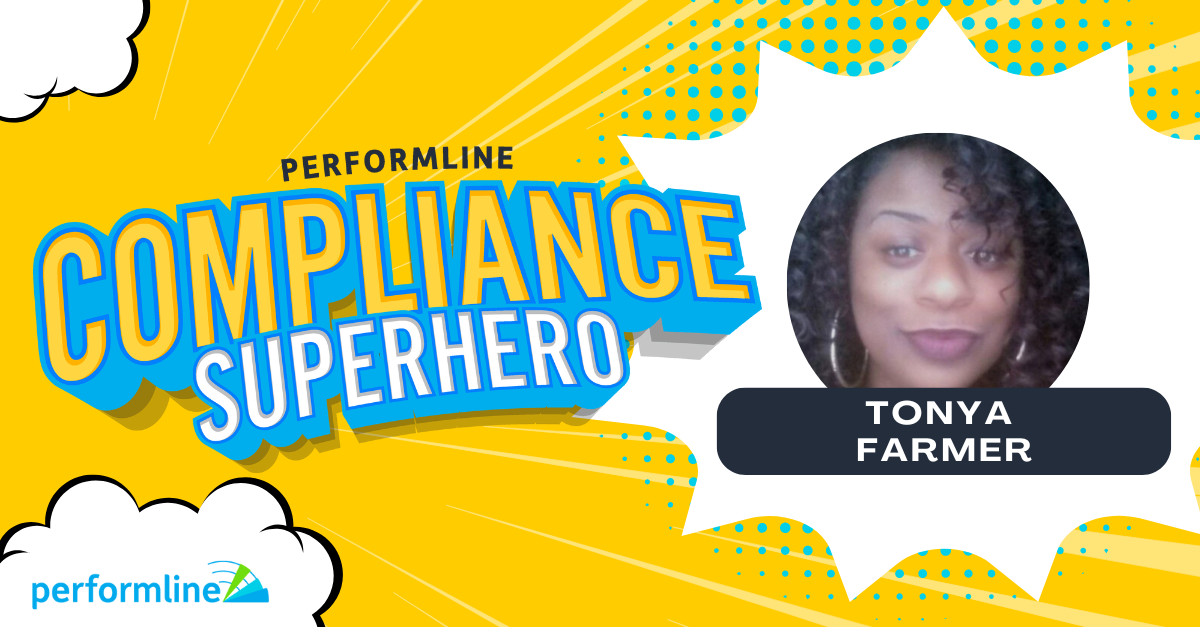Compliance Superhero: Tonya Farmer
Welcome back to our Compliance Superhero Series! Every month, we feature a compliance professional who is excelling in their work. We delve into their background, their perspectives on the industry, and any hidden superpowers they may possess. We may not be able to get them into the next phase of the MCU just yet, but you can get to know them right here. This month, we’re spotlighting Tonya Farmer, Quality Assurance and Development Specialist/WFM at Priority Payments. The interview has been lightly edited for clarity

Tell us a little bit about yourself and your role at Priority Payments?
About four months after graduating [from Georgia State University], I joined Priority. I started in a customer service role, helping process rental assistance payments for tenants. Within a couple of years, I transitioned to the Quality Assurance and Workforce Management team, where I’ve been for about four years now.
Can you share a little bit about your journey into the compliance space?
While in the military, I was a Computer Operator Analyst Specialist. That meant setting up secure and non-secure networks, attaching to node centers, doing web design, and managing communication systems, including email and network security.
After my military service, I used my GI Bill to further my education. My first degree is in Health Information Technology, which blended my IT background with the medical field. Later, I pursued a degree in Psychology from Georgia State University.
Compliance touches so many different areas of business, from employees to clients. My background gives me a broad perspective, allowing me to ensure we’re meeting all necessary standards across the board.
What do you like most about the work that you do?
The number one thing I love about quality assurance and compliance is ensuring that our clients get what they expect.
When I score a call and see high scores, it tells me that everything—training, staffing, client interactions—is working as it should. It means we’re meeting our goals and resolving customer needs effectively.
I also love identifying areas for improvement. Not everyone gets things right on the first try, and compliance isn’t just about pointing out mistakes—it’s about finding teachable moments. We use those insights to develop training and make processes even better.
What is the most challenging aspect of working in the compliance space?
The sheer volume of it.
We want to meet every need and ensure we’re fully prepared as we grow. Scaling while maintaining compliance is a challenge.
Also, my military background instilled in me that if you’re on time, you’re late. So I always strive to stay ahead of the game. But in compliance, sometimes you have to wait for things to unfold before taking action. That lack of control can be tough for me, but I’ve learned that patience is key.
What advice would you give to a team that is working to build a successful compliance program?
Ask questions. Understand the program you’re building and define clear goals. Once you set your goal, you can map out the steps to reach it.
Stay open-minded. Don’t box yourself into one approach. If something doesn’t work, be flexible and explore alternatives. Discuss ideas, consider different perspectives, and choose what best serves your overall objective.
What tools would you say are most important for the work that you do?
One of our biggest tools is PerformLine!
We use it for quality scoring, training insights, agent performance tracking, and monitoring client interactions. It helps us see who’s excelling, who needs extra support, and whether calls are being resolved on the first attempt.
We also use Nice for call management, and I’m involved in call routing and scripting to ensure a seamless customer experience.
What would you or others say is your superpower?
My superpower is spotting a kink in the plan.
If we’ve set a goal and something goes off track, I have a knack for identifying what’s wrong and figuring out how to fix it. It’s not just about pointing out mistakes; it’s about resolving them and keeping things moving.
Sometimes, I’ll catch things I wasn’t even looking for! My team jokes about it—we’ll be focused on one thing and stumble upon another issue. But once I see it, I have to fix it.



